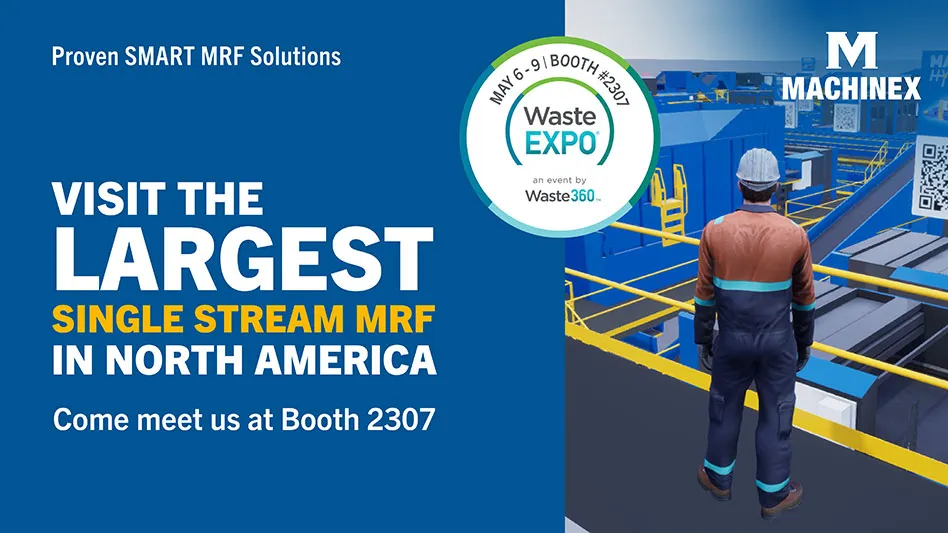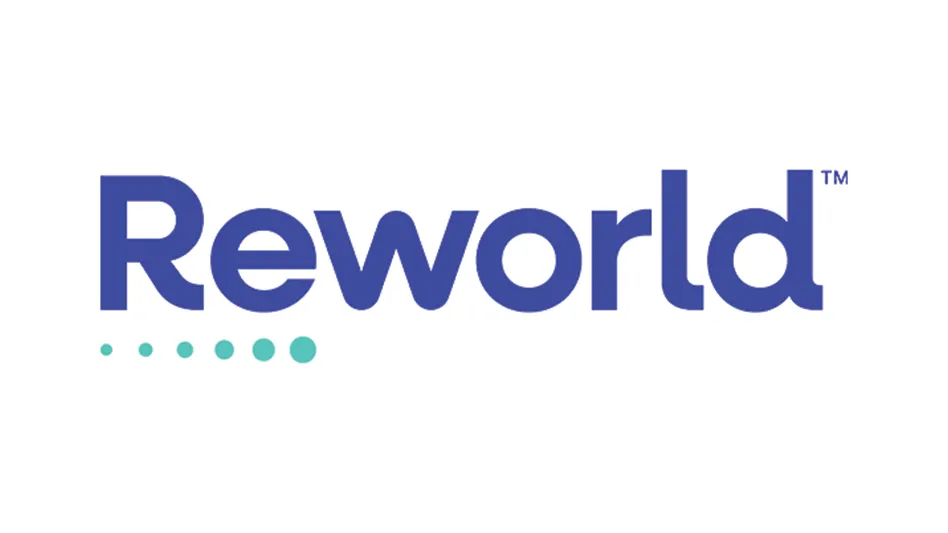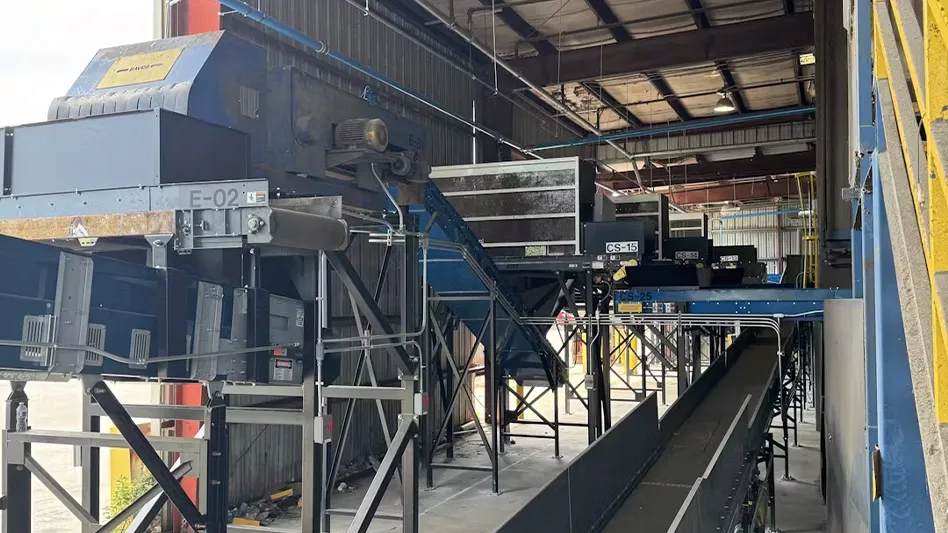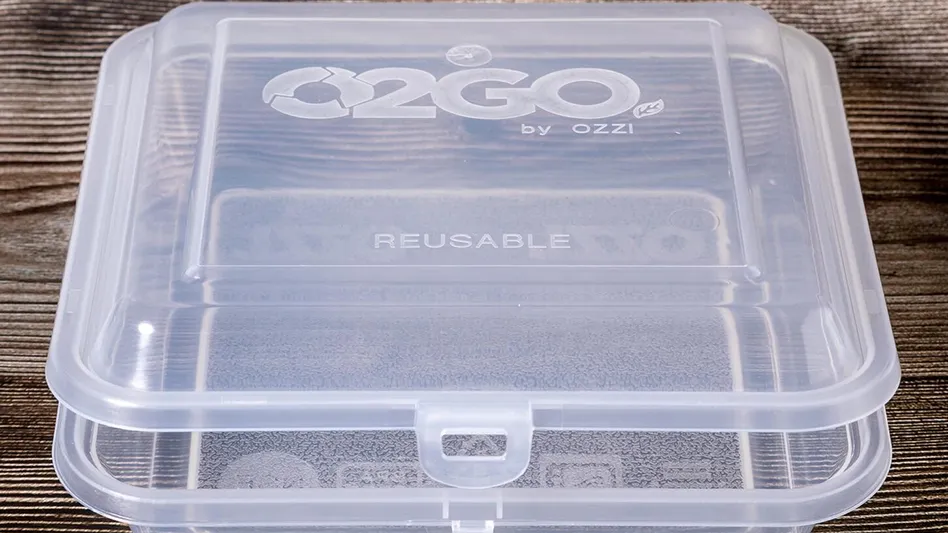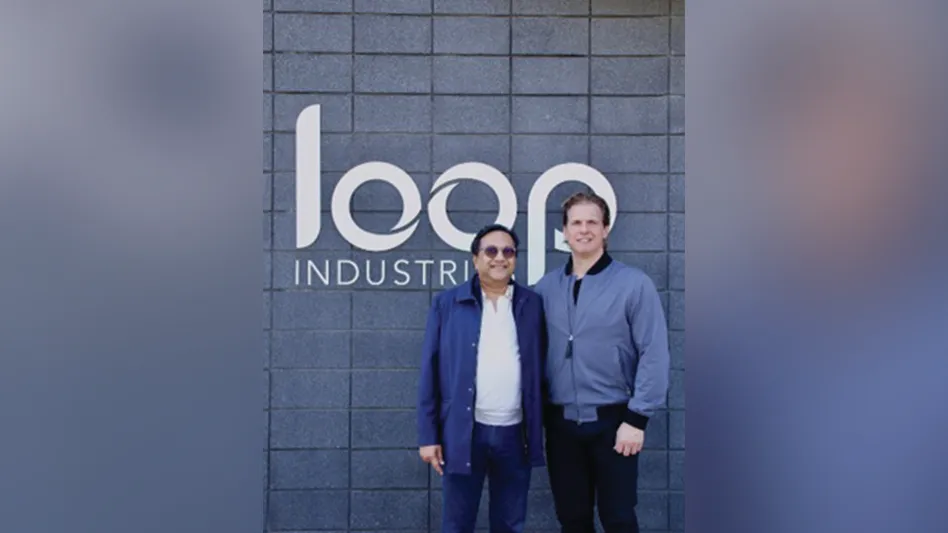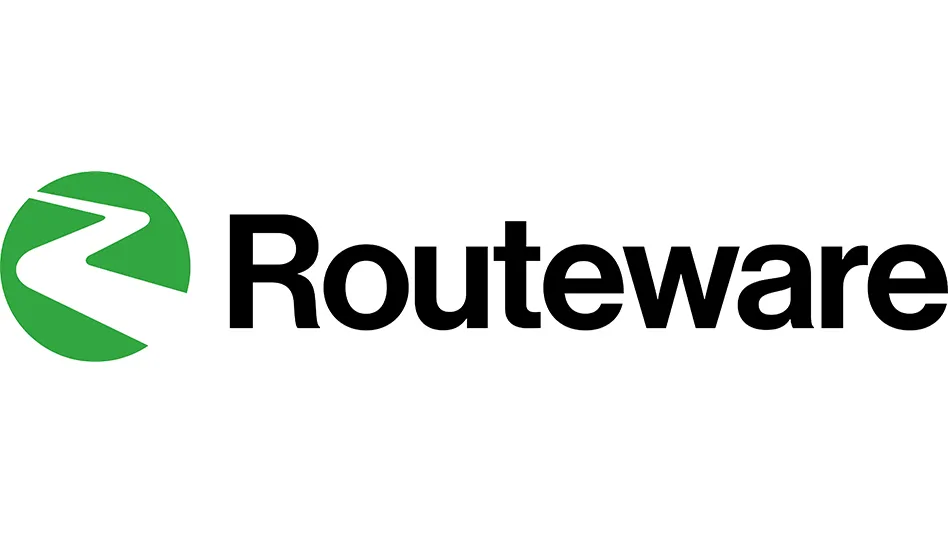Editors’ Note: The following feature is an edited transcript of a presentation given by Victor Bell of Environmental Packaging International, Jamestown, R.I., as part of the Paper Stock Industries Chapter of the Institute of Scrap Recycling Industries Inc. track during the 2011 Paper Recycling Conference .The event, hosted by the Recycling Today Media Group, was Oct. 23-25 in Chicago.
 Everybody has been talking about extended producer responsibility (EPR), but do you understand how it would work in the United States? And do you know what some of the responsibilities are? It means the producer takes responsibility for its packaging at the post-consumer stage. EPR shifts the responsibility for packaging and printed paper recycling and disposal from local governments to private industry.
Everybody has been talking about extended producer responsibility (EPR), but do you understand how it would work in the United States? And do you know what some of the responsibilities are? It means the producer takes responsibility for its packaging at the post-consumer stage. EPR shifts the responsibility for packaging and printed paper recycling and disposal from local governments to private industry.
Also, one of the goals of EPR is to increase recycling and to make sure we reach certain targets around the world. It also helps the companies or the brand owners internalize these costs. EPR also impacts how companies design and choose materials for their products. If producers pay for post-consumer waste created by their products, it creates an incentive for them to make packaging for their products that is less wasteful.
World Wide
We now have extended producer responsibility in every European country and now in every Eastern European country. Basically, every Organisation for Economic Co-operation and Development (OECD) country in the world besides the United States has extended producer responsibility on packaging. All of Europe, most of Eastern Europe—even the Ukraine—has extended producer responsibility for packaging. Russia has proposed draft legislation. Turkey has established EPR, and Israel has just passed its program. Japan, South Korean and Taiwan have extended producer responsibility programs for packaging. EPR is basically worldwide, even in Latin America. Uruguay has just passed a program and is implementing it, and Brazil is considering an EPR program.
EPR is no longer a small, random issue. It is basically the way the rest of the developed world does it.
In Canada we already have programs in Ontario, Quebec and Manitoba. British Columbia has passed its legislation, and its program will be online in about another 12 months. And Saskatchewan also has passed its requirements.
The issue for brand owners is that every province in Canada is different. In fact, this is how different they are: In Ontario 50 percent of the verified cost that a municipality has for collecting the Blue Box is paid for by the manufacturers. In Quebec, it is 50 percent of the negotiated cost for programs. In Manitoba, it is 80 percent of the cost, and in British Columbia it is going to be 100 percent of the cost. In Saskatchewan, right now we think it is going to be 75 percent of the cost. What that means is the cost of collecting, processing and managing that waste net the cost of revenue would be paid for by the brand owners.
Brand Owners
If it's Johnson & Johnson Baby Shampoo and Johnson & Johnson is the brand owner, Johnson & Johnson knows how much that PET (polyethylene terephthalate) weighs in that bottle of baby shampoo and has to pay a cost. And then there is the cap and the label. And if there is a box around the bottle when it is sold to the consumer, the cost to Johnson & Johnson includes that box.
|
Important Questions There are a lot of questions brand owners and other stakeholders need to ask about EPR. One, what is actually covered? In Quebec, for example, you have to pay fees on a ream of paper. If you buy a ream of copier paper, you have to pay a fee on it because that paper will eventually end up in the recycling bin. That is the only scheme in the world that includes reams of copier paper. In most of Canada and beginning in France, junk mail, or direct mail, is covered. So if a bank puts out 10,000 offers for a credit card, that bank has to pay EPR fees for recycling and managing that material. Who is the producer? Is there going to be a minimum threshold? Is a small pizza shop going to be exempt from fees, while the large pizza shop is going to have to pay? We have to look at fairness and ways to ensure that. Who is going to set and monitor performance goals? What are the goals for different materials? What is the roll of local government? One of the big problems in Toronto is that they have all these MRFs, and local governments don't want to close the small MRFs because they have 10 or 15 people working there. But it may make more sense to build a bigger MRF to consolidate two or three of the smaller ones. You have infrastructure that some of the local governments might have that might become obsolete as the EPR program becomes more efficient. How many stewardship organizations are you going to have in the area? Will one be specified or will there be opportunities for multiple organizations? Who is going to own the materials when they get collected and how is anti-competitiveness going to be addresssed? How will the program support collaboration but not constrain competition? Can we come up with a model state? Right now, for some of the largest companies that we process fees for, in Europe alone we have 32 fees. Just in packaging fees for one of the companies we work with, we are filling out 48 different country forms, and each one of them is different. It would be nice if they had one model to follow and similar data they collected. - Victor Bell, president of Environmental Packaging International |
In Canada, EPR programs address consumer packaging. While these programs cover the OCC (old corrugated cardboard) that is sent to households via Internet sales, they do not cover the OCC generated by Wal-Mart. EPR doesn't affect any of the commercial programs. In Europe, about half of the EPR programs do and half of them don't include commercially generated material. In Asia it is almost always just the packaging that goes to the household, not what is collected at the store. The commercial system that is already in place pays the cost, and those systems are very high-quality, single-material-stream systems. It is very good material; they don't want to interrupt that.
EPR costs are directly related to what it costs to collect and process the material, minus the value of the material. For many years in Ontario, if you put aluminum on the market, you received a credit because the aluminum was worth more in the system because of its market value.
A Perfect Storm
In the United States, we already have 69 extended producer responsibility laws in 32 states. Most of these laws concern a single product, such as electronic waste, batteries or mercury switches. We also have bottle deposit laws in 10 states. Bottle deposit is an extended producer responsibility program. A lot of states are considering framework legislation, which Maine already has passed. The framework approach establishes EPR as a state policy and provides authority to address additional products over time.
Right now we have this "perfect storm." The cities and towns have zero money. State governments and cities are broke, without a doubt, and they cannot invest in the appropriate infrastructure to collect and process recyclables and to address those kinds of issues. Also, all of the CPG (consumer packaged goods) companies are begging communities to allow them to include their products' packaging in the recycling stream, which can lower the value of some recyclables and require infrastructure improvements.
The problem is that a lot of these communities have built small MRFs (material recovery facilities) that are not effective and efficient. So a lot of industry has said, "Hey wait a second. If we have control of the waste stream, would we be better off?" In fact, in Canada that is why a lot of EPR programs are going from the 50 percent control to the 100 percent control. Because in Canada, when it is 50 percent, the community can say, "I'm still paying for half, and if I want two drivers on that garbage truck, I'm going to do it." Where if the brand owners have 100 percent control, they can say, "We are going to go to bid, and these are the minimum specs, because we are paying the cost." So, a lot of brand owners are saying they would rather have 100 percent responsibility than 50 percent responsibility or less. Doing so takes the government, besides making sure there is a level playing field, out of the equation.
EPR Models
In the United States, we have many states that have introduced legislation in 2011. Maine passed the country's first EPR framework bill before its last governor left office. However, the new governor has done nothing to implement it at the moment. This framework bill allows the Maine government to pick all kinds of products and get a program going. The problem with framework bills is that you get the electronics people against it, you get the mercury switch people against it, you get the mattress people against it.
Last year, legislation was passed in Iowa, Massachusetts, New York, Vermont and Rhode Island, and there are many different models out there. There is full industry financing, which means that there is a single compliance scheme, as in most of the Canadian provinces. In Germany and the U.K., for example, there are competing schemes. Under this model, for example, Waste Management would have a scheme and Rock-Tenn would have a scheme,that they would organize, and companies could contract with them to meet their obligations in that area. In the U.K., there are tradable credits; but, we don't see anyone following that model in the U.S.
In some countries, there is a shared responsibility model in which the packer/filler, the convertor, the brand owner and the retailer all pay a portion. The problems with that model, which is used in the U.K. and Ireland, is that there is no direct influence back on the brand owner affecting packaging design, and the other parties have no control over how the packaging is being designed.
What everyone in the United States is talking about is a way to internalize recycling costs. It would be brand-owner financed and managed. A board would be set up by the companies who are paying the fees. The biggest payers are not only the brand owners but also the retailers, who have to cover their private-label goods as well as anything that doesn't have a brand name on it or a brand owner in this country.
The other thing is that we want to achieve high rates of recycling and we also want quality recovered material, but we also don't want to have to recycle every single piece of packaging there is. There is a lot of packaging out there that doesn't make any sense to recycle because the economics don't work—your flexible films and plastic coffee creamer cups.
Determining Cost
Generally, the more packaging a brand owner puts into the market by weight, the more that brand owner pays. The more difficult that packaging is to recycle or the lower the value of the recyclables, the more the brand owner pays. Companies with packaging that includes plastics, laminates and composites can pay up to 500 percent more than other materials in some EPR schemes.
France has this new thing called "disruptor fees," or "eco-modulation fees." This policy basically tells brand owners that if they do something stupid, they will be charged three times as much as normal. For instance, if a brand owners puts a ceramic top on a glass bottle, that brand owner is going to pay triple because it affects the whole system. If a brand owner is going to have a paper envelope with a lot of plastic in it, and it affects the system, it is going to pay triple. If a brand owner puts silicone in its PET and it doesn't have a specific gravity of less than one, that brand owner is going to pay triple the fee because it negatively impacts the system.
These are some of the trends and issues surrounding extended producer responsibility affecting brand owners and other stakeholders.
Victor Bell is president of Environmental Packaging International, based in Jamestown, R.I., with offices in New Hampshire and Toronto. He can be reached at vbell@enviro-pac.com.
Important Questions
Victor Bell offers his thoughts on questions stakeholders should consider asking when EPR programs are up for consideration. See sidebar.

Explore the December 2011 Issue
Check out more from this issue and find you next story to read.
Latest from Recycling Today
- Meeting the decarbonization challenge
- Cyclic Materials expands leadership team
- Paper cup acceptance at US mills reaches new milestone
- EPA announces $3B to replace lead service lines
- AMCS showcasing Performance Sustainability Suite at WasteExpo
- New Way and Hyzon unveil first hydrogen fuel cell refuse truck
- Origin Materials introduces tethered PET beverage cap
- Rubicon selling fleet technology business, issuing preferred equity to Rodina Capital
